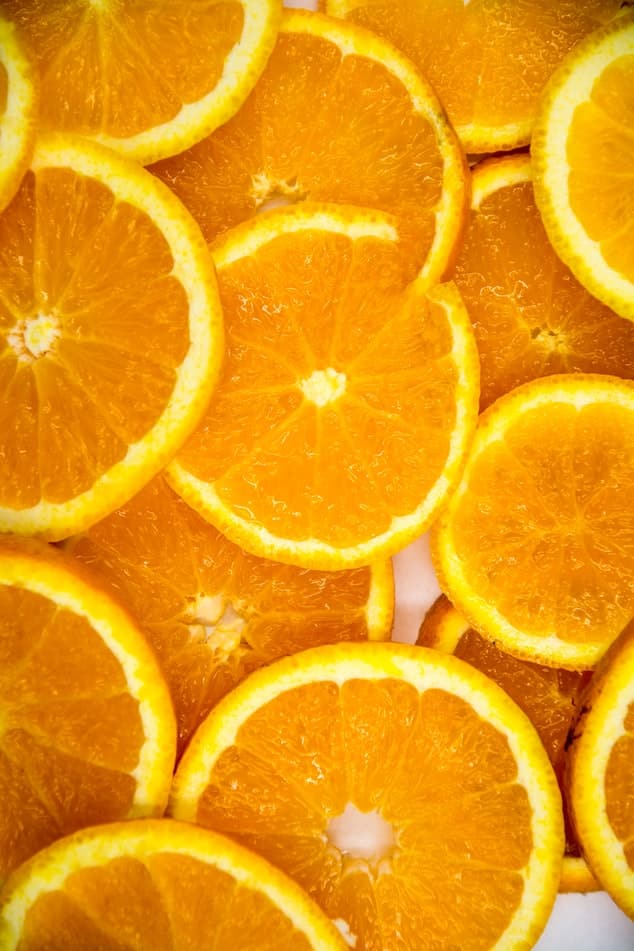What’s Cooking? Vitamin C
Learn about vitamin C – its benefits, recommended daily intake, vitamin C deficiency and food sources – from our Dietician Carol Valle. Watch the video or read the transcript below.
Subscribe to our YouTube Wellness channel.
Hi everybody! It’s Carol, the dietitian, and I’m going to talk about vitamin C and its role in your diet. Citrus fruits are considered a winter produce, and you can find them in abundance this time of year. Because they’re a great source of vitamin C, I will be discussing some of them later.
It is also known by its chemical name of ascorbic acid, and it plays a really vital role in maintaining many of your body’s functions. Humans are unable to synthesize vitamin C, so the only way we can get it is to eat some form of it.
Benefits
It helps with:
- maintaining healthy skin, blood vessels and bones
- protecting cells and eye health
- boosting immunity – it will not prevent disease
It has a vital role in metabolizing protein and healing wounds because it helps to synthesize collagen, which is essential to wound healing. If you’re ever in the Health Care Center or have a wound, you might be prescribed additional vitamin C to help promote wound healing.
Vitamin C also helps improve the absorption of iron in your diet, specifically the iron that’s found in plants or an iron supplement. Your body already does a good job absorbing iron from meats (e.g. beef, chicken and fish), but there’s also iron in plants, breads and grains, which your body does not do a great job of absorbing.
One of the most famous uses is in preventing scurvy. Unfortunately, years ago, sailors found this out the hard way as many of them would develop scurvy, which can cause anemia, arm and leg pain, leg swelling, ulcers and can eventually lead to death, as was the case with some sailors on long distance sea travel.
A physician who worked in the royal navy is credited with proving that scurvy can be successfully treated with just a serving of citrus fruit every day. This disease is rarely found anymore, especially in established countries, but it’s still found in individuals suffering from extreme malnutrition or diseases that cause malabsorption. It’s very easily treated; something as small as a little clementine a day has enough vitamin C to prevent scurvy.
Recommended Daily Allowances
Vitamin C is a water-soluble vitamin, and your body can only absorb a certain about of it. The recommended daily allowance ranges from 75 to 90 milligrams a day: 75 for women and 90 for men. If you smoke, you require more but not much more, about 35 to 40 milligrams more a day.
The average amount of an over-the-counter vitamin C tablet is 500 milligrams, so if you only need 75 to 90 milligrams a day, you can see that just one of these tablets a day provides you more than what you need. In fact, this provides you with 550 percent of your average daily needs. If you take in more than you need, which you would if you have one 500 milligram tablet a day, your body is going to excrete the excess in your urine.
It has low toxicity and doesn’t cause serious adverse effects at high intakes, though nausea and abdominal cramps may be a sign you might be taking too much. Experts recommend you don’t take more than 1,000 milligrams a day, but you can take up to 2,000 milligrams a day without adverse effects. Those high amounts are not necessary. If you take in more than what your body can absorb, you’re just going to excrete it in your urine.
Vitamin C Deficiency
There are some groups of people who are considered to be at risk for vitamin C deficiency including people who:
- smoke
- have very limited food variety or intake
- suffer from malabsorption diseases
- have end-stage renal disease and are on dialysis
All of that can easily be taken care of by a little supplement or a serving of any type of citrus fruit. There’s other foods high in vitamin C too.
Vitamin C and the Common Cold
Hundreds and hundreds of studies have been conducted examining vitamin C’s role in preventing the common cold. Studies I read examined whether taking vitamin C continuously prior to getting a cold or increasing it after getting a cold was effective at preventing the common cold. These studies found it did not reduce the risk of developing a cold, but if you were taking it prior to getting a cold it seemed like your symptoms might be a little bit less severe. Long story short, even though everybody likes to pop vitamin C this time of year to prevent a cold, it doesn’t seem to prevent a cold, but it might make symptoms less severe or reduce how long it lasts.
Foods
There are many foods that have vitamin C, and it’s naturally present in all kinds of forms. We tend to focus on citrus because it’s so high in vitamin C and is abundant this is the time of year, in the winter. You could get it as a dietary supplement as well, and it can also be added to foods. I’ve seen it fortified in cereals and some juices. For example, cranberry juice is not naturally high in vitamin C, but some cranberry juices are fortified with it.
The best sources are fruits and vegetables including:
- tomatoes
- red and green peppers
- kiwis
- broccoli
- strawberries
- papayas
Vitamin C content in food can decrease during periods of long storage, so if you have a refrigerator full of oranges, two or three weeks later the vitamin C content of those oranges is going to be reduced. They will still have plenty of it, but it will reduce over time.
The biggest waste of vitamin C is cooking, because it is a water-soluble vitamin, when you heat or boil it, the vitamin C leaches out. The good news is the foods that are highest in vitamin C tend to be fruits and vegetables, which you can eat raw or minimally processed.
Five servings a day of any type of fruit or vegetables mixed or matched, it doesn’t have to be citrus fruits or red peppers, throughout the day will more than exceed the intake you need. A good way to incorporate citrus foods in your diet, besides your morning glass of orange juice, is making a citrus salad. I section all my fruits and mix them together for a citrus salad. You could also add sliced fruit to your morning cereal or top your salad with some fresh fruit and maybe a little red pepper, to add some crunch.
You can also freeze citrus. I never thought of freezing citrus, but you can actually freeze whole oranges or fruit. How you freeze it depends on how you want to use it when it’s defrosted. There are different ways to freeze fruit so you get the best use of it once it’s defrosted.
You can also zest your fruit. You can save the zest in a Ziplock bag and toss it in your freezer. Sprinkle it on hot cooked rice, chicken or fish for a little fruit flavor. You can add zest to just about anything, and every time you do, you will be adding a little vitamin C as well.
Learn to freeze and store oranges and make broiled grapefruit and a citrus vinaigrette.
I hope you all stay healthy and add some vitamin C foods to your diet. Thanks so much!
About the Author
Carol Valle is the dietician at Carroll Lutheran Village. She has been working at CLV since 2018.







